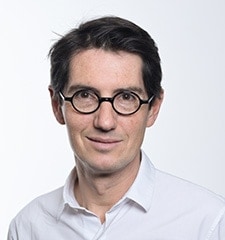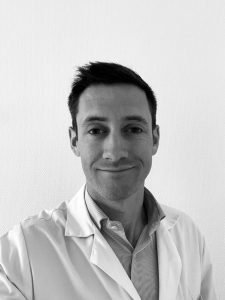Vascular and Endovascular Surgery

Marie-Lannelongue Hospital

Paris Saint-Joseph Hospital
The Vascular Surgery department is co-managed by Professor Stephan Haulon (Hôpital Marie-Lannelongue) and Dr Maxime Raux (Hôpital Paris Saint-Joseph).
The Vascular and Endovascular surgery centre combines Paris Saint-Joseph Hospital and Marie-Lannelongue Hospital vascular surgery departments, it treats all vascular diseases.
The recognised expertise of its surgeons in all of the domains concerning vascular conditions ensures that it can propose innovative mini-invasive surgical procedures to its patients. Weekly multi-disciplinary consultations guarantee open exchange on difficult subjects, especially the treatment or aortic and peripheral conditions.
Endovascular interventions are completed in hybrid treatment rooms fitted out with cutting edge technology ; these rooms have all of the attributes of a normal operating theatre and an interventional radiology room. These high technology facilities allow for the treatment of increasingly complex vascular conditions using mini-invasive approaches and ensuring the highest level of patient safety.
Clinical research is an integral part of the department’s day-to-day activities and ensures patients get access to the latest innovative treatments. The organisational innovation of the patient’s visit ensures that hospitalisations are shortened or replaced by same-day admission outpatient treatment or conventional hospitalisation with shorter recovery times.
Important figures
- With more than 3,000 interventions per year, our hospitals are now one of the leading national and international institutions for surgical activity.
- 500 endovenous interventions per year
- A team of 20 surgeons/assistants and doctors
The main diseases treated
- Occlusive conditions (arterial narrowing or occlusion related to numerous risk factors : Tobacco, diabetes, hypertension, age, etc.)
- Cerebrovascular accidents where the carotid is affected
- Mobility issues or pains when the aorta and lower limbs are affected
- Organ failure or abdominal pains when the digestive or renal arteries are affected
- Aneurysms
- Venous conditions (Varicose veins/superficial venous failure)
Techniques used
- Carotid and supra-aortic artery surgery : carotid surgery is completed under loco-regional cervical anaesthetic to guarantee optimal surveillance of the patient during surgery. In addition to this we do internal carotid percutaneous angioplasty (dilation + stents) following the guidelines set out by the higher medical authorities.
- Revascularisation of lower limbs mostly involving percutaneous angioplasty and direct minimally invasive techniques.
- Kidney revascularisations (mostly by percutaneous angioplasty). Some complex renal artery conditions are treated with ex-situ re-construction and auto-transplantation of the kidney.
- Digestive revascularisations include percutaneous angioplasty and direct surgical techniques.
- Conventional surgery involving opening the abdomen and replacing the affected aorta with a prosthetic (bypass).
- Endovascular surgery, with the implant of an endoprosthetic inserted via the femoral artery. (The aneurysm can thus be treated without surgical incision, reducing hospitalisation duration)
- “Hybrid” surgery after the recent acquisition of a hybrid treatment room combining the latest generation imaging techniques/tools with an operating theatre-type installation. (Allowing interventions on fragile patients who would not support classic surgical methods)
- 3D imaging technology (overlaying pre-op images of the patient during the hybrid procedure, thus reducing irradiation levels and the need for iodine injections, required to render blood vessels visible, which are toxic to kidneys).
- Endovenous techniques (involving the destruction of the vein from the inside using a laser or radiofrequency probe)